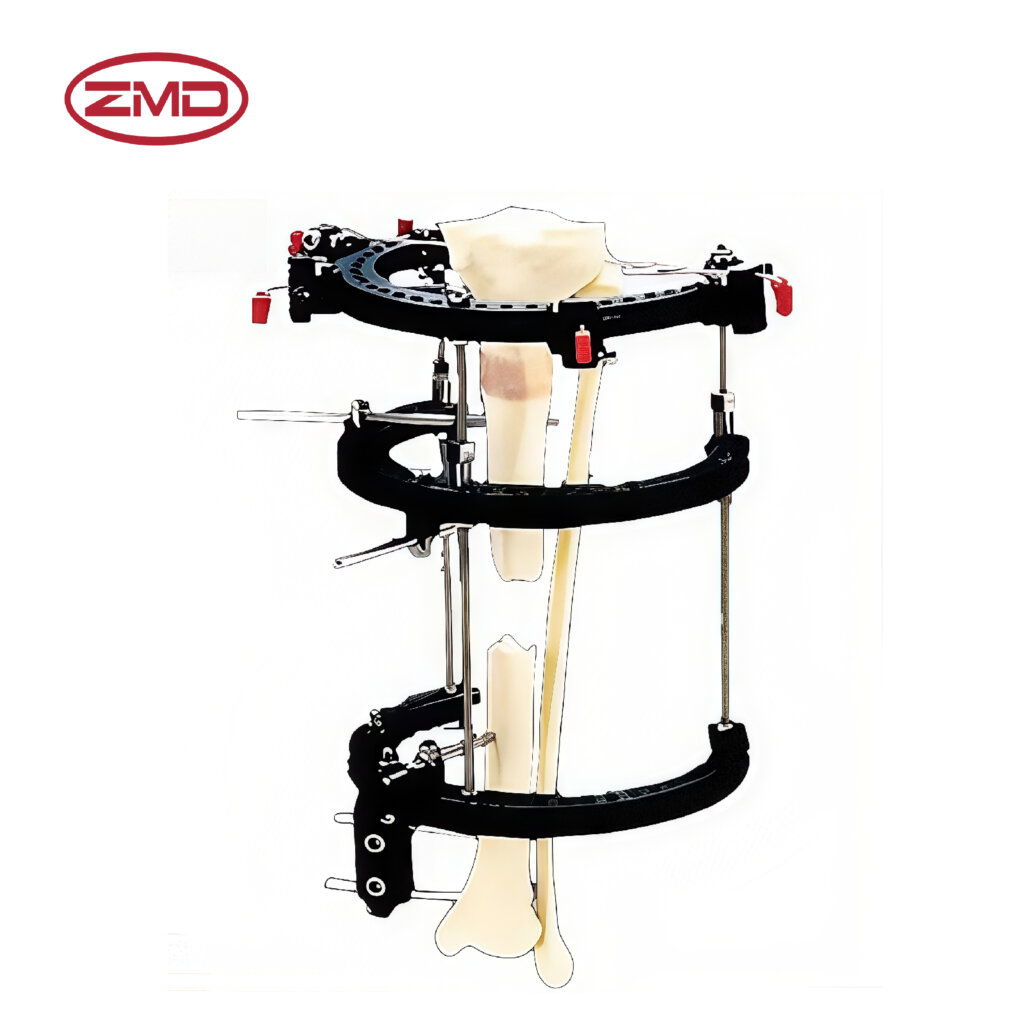
- Home
- About Us
- Products
- Trauma Internal Fixation System
- Spinal Internal Fixation System
- External Fixation
- Artificial Implants System
- Sports Medicine
- Power tools
- VSD System
- Instruments
- Medical supplies
- Blog
- Personnel Profile
- Contact Us
Phone line
| CODE | PRODUCTION | DESCRIPTION | MATERIAL |
| ZH103 | Elbow Fixator Central Connecting Unit | / | Aluminum |
A: It's typically constructed from durable medical-grade materials such as metal and plastic. The metal components offer strength and stability, while the plastic parts might contribute to flexibility and ease of use in certain aspects, ensuring the unit functions effectively in the elbow fixation system.
A: It provides stability by firmly connecting different parts of the fixator. This connection ensures that the entire fixation system remains intact and properly aligned around the elbow. By maintaining this integrity, it restricts unwanted movement of the elbow joint, creating a stable environment that supports the healing process.
A: It's designed to be relatively easy for medical professionals to install. They have the necessary training and expertise to position it correctly and connect it with the other components of the elbow fixator according to the specific requirements of each patient's condition.
A: Some adjustments may be possible depending on the individual patient's needs. For example, as the healing progresses or if there are specific anatomical considerations, certain aspects of the unit can potentially be modified to optimize its function and comfort for the patient.
A: When properly fitted, it should not cause excessive discomfort. The design takes into account the need to support the elbow without causing undue pressure or irritation to the surrounding tissues. However, a certain level of awareness of the device may be present initially, but this usually lessens over time
A: The duration it needs to stay in place depends on the severity of the injury and the progress of the healing process. In less severe cases, it may be removed relatively sooner, while for more complex injuries like severe fractures or extensive ligament reconstructions, it might need to remain in position for a longer period to ensure proper healing.
A: Removal is usually carried out by a medical professional. They have the skills and knowledge to safely take it out without causing any harm to the patient or the healed tissues, following appropriate procedures based on the specific design and installation of the unit.
A: It's used for a variety of elbow injuries including fractures (whether simple or complex), dislocations, and for providing post-surgery stabilization. It helps maintain the correct position of the elbow joint during the healing phase for these different types of conditions.
A: Initially, it restricts movement to aid in the healing process by keeping the elbow joint stable. However, as recovery progresses, it can be adjusted if necessary to allow for a gradual increase in the range of motion, enabling the patient to regain normal elbow function over time.
A: Some care instructions may be provided to ensure proper use and longevity. These could include guidelines on keeping the unit clean, avoiding excessive moisture or impacts, and following any specific maintenance steps recommended by the manufacturer or medical team to ensure it continues to function well throughout its use.
Oh yeah! I have to mention their payment options and discount offers, which are awesome! Those payment methods are as flexible as moving water and can be chosen freely according to our cash flow situation. And the frequent discounts, like a timely rain, have been moisturizing our financial statements time and again, and have had a rocket-like positive impact on our profits! With ZMD, I feel relaxed and at ease when it comes to purchasing!
Send us a message if you have any questions or request a quote. Our experts will give you a reply within 24 hours and help you select the right valve you want.
Book Now
If you are looking for professional orthopedic medical product solutions, don’t hesitate to contact us now!

We are an integrated manufacturer specializing in orthopedic medical industry, providing high quality and reliable orthopedic medical products to customers worldwide.
Copyright © 2024 ASK Project